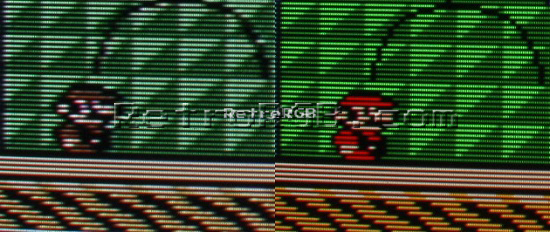These are posts from 1982:
Atari arcade graphics.
nor...@googlegroups.com
4/24/82
Does anyone know whether the graphics used in Atari's "Tempest" and
"Spcace Duel" arcade games are vector graphics?
Re:
unc!bch
4/29/82
TEMPEST is indeed a vector display. During the promotional display while
the machine is idle, there is kind of a multicolor unfolding of the word
TEMPEST which shows a distinct flicker as it hits the refresh rate of the
tube. What is more impressive than the display is the speed of the
display generator which is able to keep up with the various actions of
the "enemy" at prodigious rates...particularly at the higher levels of the
game.
Re:
psuvax!sysred
4/25/82
OK - now we've gotten both sides of the issue. The lines don't
have jagged edges so it must be vector graphics. Yet, on close
(real close!) examination, the display is made of discrete display
elements (each display point looks like a long, thin spot
of one color, with the long axis vertical, all surrounded by a black matrix)
so it must be raster scan. I don't claim to know much about
CRT image generation (esp. color), but I don't understand how a
vector system can be superimposed on a discrete screen. On the other
hand, I don't understand how the angled lines can be made smooth
in a raster scan system (although I recently saw an ad for a color
terminal which mentioned something about smoothing lines in a raster
system). The point is, does anybody REALLY know (I mean, has anybody
peeked inside)? Anybody from Atari reading this?
Additionally, has anyone else seen Zaxxon? This is the first video
game I've seen to make an attempt at 3-D display (displaying all
three simultaneously - I'm ignoring Red Baron). For those of you
who haven't discovered the game, the display is an isomorphic projection
of a "fortress" through which you must fly a plane using horizontal
and vertical control from a joystick (forward speed is fixed).
I give it a high recommendation. Anybody working on a
Unix version (JUST KIDDING!)?
Re:
watarts!eric
4/26/82
All colour crts have `pixels' formed by the mask behind the phosphor screen.
The holes in the mask, either dot or slot shaped, direct the beam from
one of the three electron guns to one of three different coloured phosphor
dots on the screen.
Eric Gisin, U of Waterloo.
Re:
murray@sri-unix
4/28/82
BULLpuckey! It is not true that *all colour (sic) crts have 'pixels'*.
Color \vector/ graphics can be (and are) done bye coating the screen with
three different color phosphors and using beam intensity to 'burrow'
through the unwanted layers to hit the color phosper you want to display.
It is a lot more complicated (in some ways) than color raster graphics.
Also regarding the question of vector or raster graphics on Tempest,
as I mentioned some months ago, I was informed by the people at Atari
who design and test the games that all the games they were working on at
that time ( about a year ago) were VECTOR graphic displays. I have every reason
to believe that they still use them, since they had all the bugs worked out
way back then. I can't imagine why they would change back to lower quality
raster scan displays. Keep in mind that when good looking displays are your
livelihood, the added cost is not a significant factor. Besides, in order to con
vince me that Tempest (or any of the other recent games) use raster graphics,
you will have to shom me the electronics. Have you seen the fireword
ks display when you when? that is impressive, and very convincing.
murray at intelqa
Re:
utah-gr!thomas
5/5/82
1. Evans and Sutherland manufacture the Picture System 2 color display,
which uses a standard color tv display, but which is a vector drawing
device. This is then a 'full range, 3 color' vector display.
2. If a display does not flicker with a low complexity image, but does
flicker with a more comples image, then it is almost certainly a vector
display. The rate of raster refresh does not change with image complexity.
3. Assuming sufficient resolution in the display tube, a vector display will
always look better than a raster display (without anti-aliasing), at least
at current display resolutions. Once we get up to 4k x 4k or so, this may
not be true because the display resolution will exceed that of the eye at
normal viewing distances, but theoretically, lines drawn on a raster display
(again, without anti-aliasing) will always look 'jaggy', as opposed to the
smooth lines obtainable on a vector display. The TEMPEST game which started
this whole discussion has a fairly coarse resolution color tube, the stripes
of color in the trinitron tube make it look like a raster display. This
fooled me at first.
4. A vector display always has an upper limit on the number of vectors it can
display without flicker. A raster display is limited only by the number of
vectors which can be resolved (i.e., you put too many vectors on a raster
display and you just get an indistinguishable blob).
=Spencer (harpo!utah-cs!thomas thomas@utah-20)
Taken from net.games usenet group.


